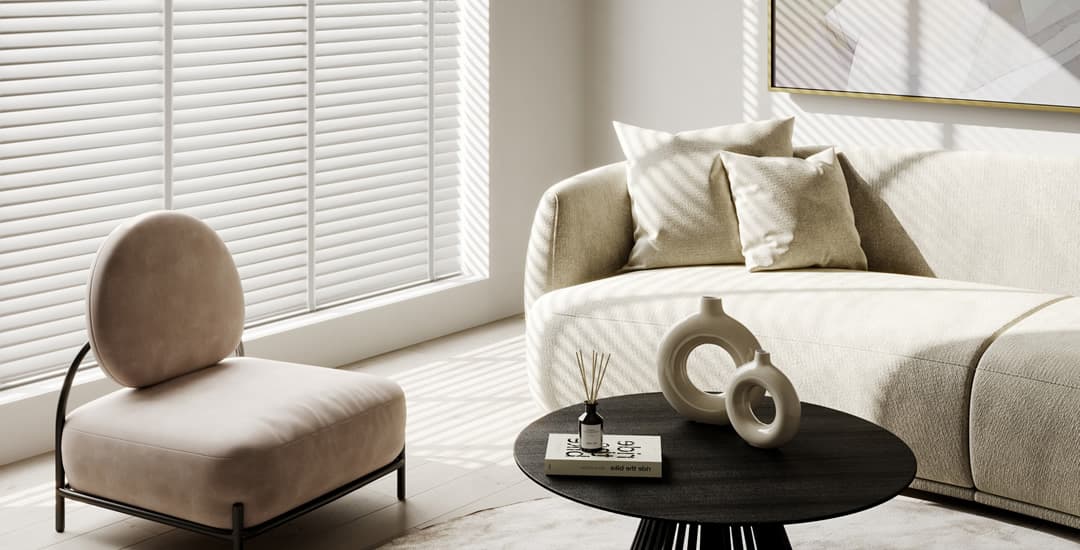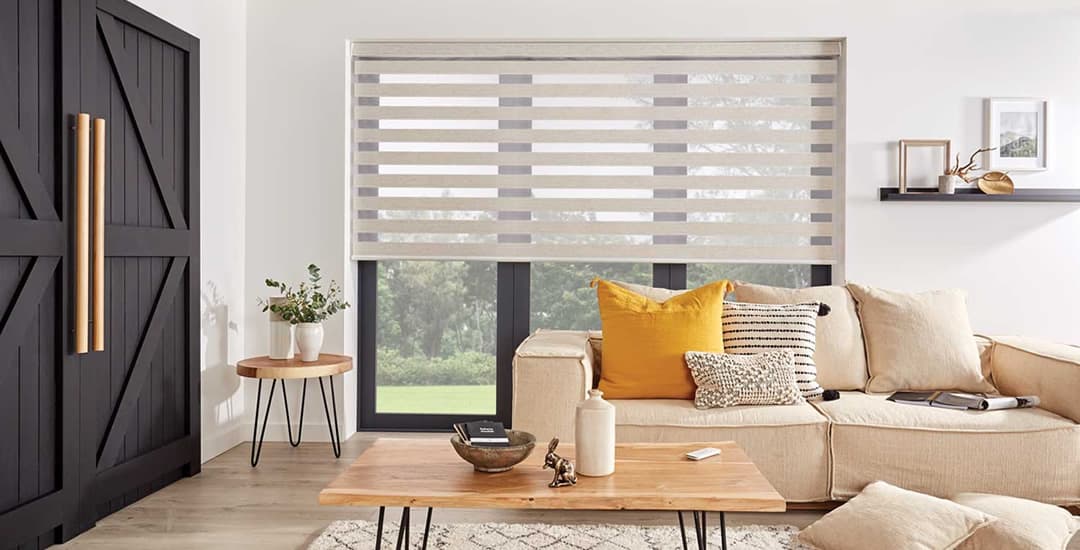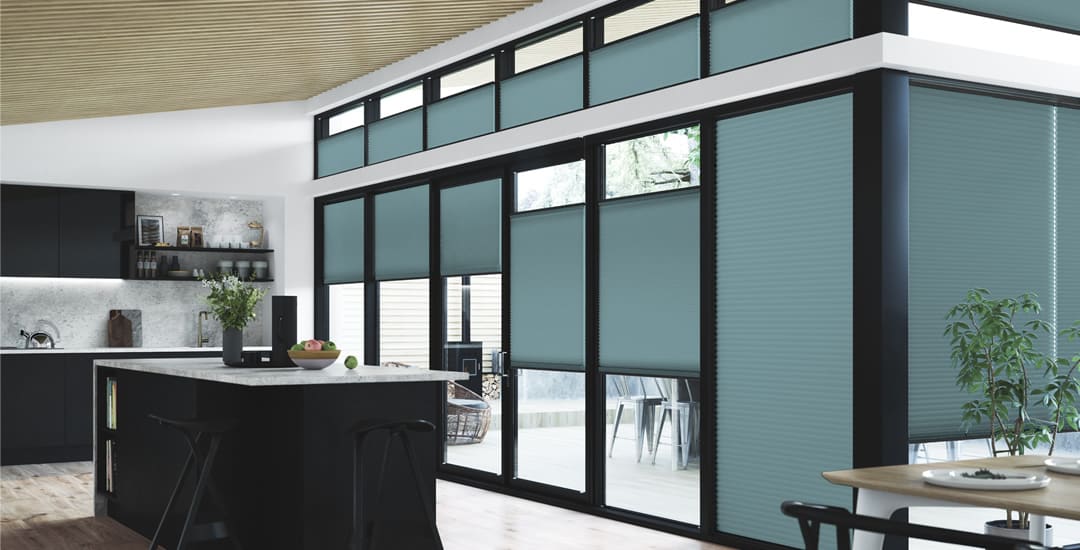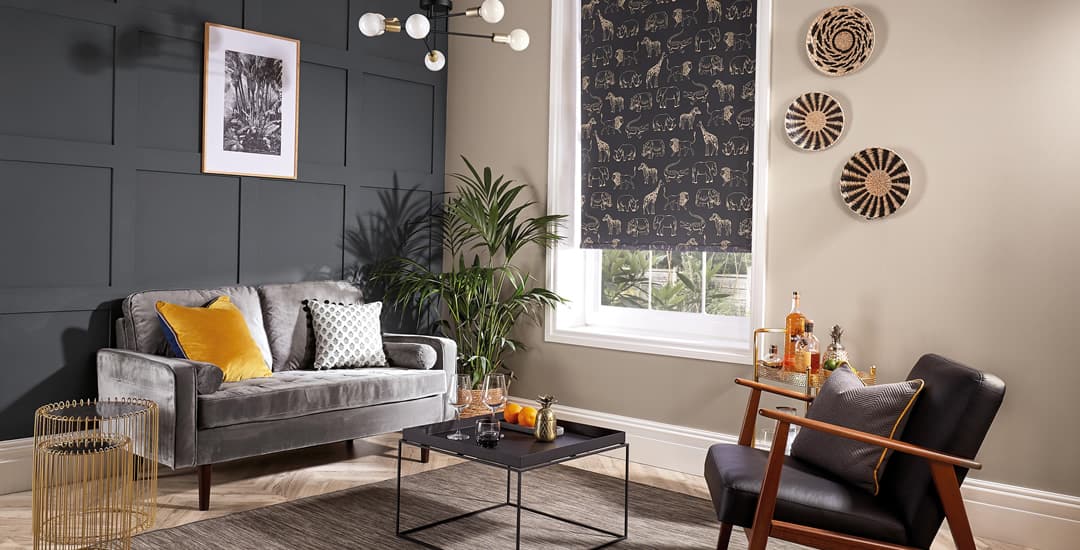
The most modern blinds in terms of the newest type of blinds to come to the market are cellular perfect fit blinds, closely followed by day and night blinds.
If you’ve never heard of either of these, bear with me and I’ll tell you more about them later on.
First though, I’m going to list the most modern blinds in terms of type, from the youngest to the oldest.
What are the most modern blinds from newest to oldest?
If you are looking for a list of the most modern blinds in order of their relative youth, here you go, from newest to oldest
1. Cellular perfect fit blinds (Just starting to toddle)
Cellular perfect fit blinds only really became something we as actual blinds geeks began to look at developing a few of years ago, and while they’re all ready for you to buy right now, they’re still uncommon in the UK and so, highly likely to make the neighbours go “ooh.”
2. Day and night blinds (currently in junior school)
Day and night blinds are relatively new to the UK market as well, but have a few years under their belts now, and had already begun to gain traction overseas several years earlier.
3. Faux-wood blinds (taking their GCSE’s next year)
Faux-wood blinds are made of solid, hardwearing PVC. This allows them to emulate the appearance of real wooden blinds almost exactly, whilst also being suitable for use in rooms where waterproof blinds are required, and being very sturdy with it. Faux wood blinds began to hit the market post-millennium, and are very popular for all of the reasons mentioned (and the fact they’re a little less costly than real wood blinds too).
4. Vertical blinds (enjoys golf, looking after the grandkids)
Vertical blinds came to market in 1960, and are the first/only blinds to hang vertically rather than horizontally. Received wisdom indicates that they were designed in this way specifically to stop them from gathering dust. Truly, a blind after my own heart.
5. Aluminium Venetian blinds (Did a mean Charleston back in the day)
Venetian blinds made of aluminium specifically were first created in 1936, which honestly is a bit further back than I actually thought aluminium had been around for. Despite being somewhat older than I assumed/expected, aluminium Venetian blinds certainly took a couple of decades to really catch on.
6. Wooden blinds (part of the syllabus in history class)
Wooden blinds are a type of Venetian blind, and I know for a fact (well, a Google fact, so maybe good enough for a point in a pub quiz, but double check before using it on Mastermind?) that a patent was issued for wooden Venetian blinds during the 18th century, and that the first recorded incidence of their being sold in the UK occurred during the same century.
7. Roller blinds (Also getting busy in 18th century Europe)
Within the same century that wooden blinds first began to get major uptake, roller blinds were also working away at keeping light out of people’s eyes while they worked on their tablets, much as they do today; albeit the tablets of today tend to be made by Apple rather than the local stonemason.
The original roller blinds were known as “Scotch-Holland” window blinds, as they were constructed from linen woven in Holland, which was then processed in Scottish water mills.
8. Venetian blinds as a general type (started earning a living hundreds of years ago, albeit may actually pre-date currency)
More pub quiz fodder for you: where do you think Venetian blinds come from? WRONG! It’s actually Persia, or modern-day Iran. Early Venetian blinds were almost certainly made from reeds or bamboo canes, and potentially wood (for posh folk).
Venetian traders brought the first Venetian blinds from Persia to Italy, and from there, they spread worldwide.
9. Roman blinds (Around in biblical times)
Finally then, the very oldest or un-modern-ist type of window blinds as far as I can reasonably ascertain are Roman blinds. Unlike Venetian blinds and Venice, Roman blinds do actually originate from Rome, and at least 2,000 years ago, when the Roman empire was still in full swing and churchgoers were still somewhat at risk of being fed to lions.
I do wonder if there are any other types of window blinds that have come and gone over time that failed to stick around to make the grade; if there are, our own R&D crew certainly aren’t willing to own up to having created any.
But the above covers the most modern types of blinds around, from the newest right through to the oldest; and all of them are still around today.
What are the most modern blinds in terms of styling?

This would probably be day and night blinds, roller blinds with certain patterns/designs, and Venetian blinds, based on looks alone.
My most modern blinds timeline/list above refers only to “modern” in terms of being the newest design type; rather than in terms of the style of the blind. So for instance, Roman blinds might be the oldest type of blinds in the world, but they can also be made in a modern style, in terms of the designs and fabrics used for them.
Ultimately, depending on the materials/designs you pick, literally any type of blind can look modern.
Cellular perfect fit blinds and day and night blinds: more about the newest types of blinds you can buy

The newest type of blinds in terms of design are cellular perfect fit blinds; sometimes known as honeycomb blinds. Some folk would argue that these aren’t blinds in the traditional sense of the word, as they fit within the profile of the window’s pane of glass, meaning that you need a different blind for each pane of a window, and of course they don’t hang over the window in the usual way we expect of blinds.
Cellular perfect fit blinds are considered to be the most effective blinds for insulating windows, and they also have a very small footprint, taking up no space at all at the window.
Not far behind perfect fit blinds in terms of the most modern blinds are day and night blinds, sometimes also known as zebra blinds. These are a type of roller blind; but the blind’s fabric is made of a continuous loop that revolves around rollers at the top and bottom, rather than being rolled up and down on a single tube.
Day and night blinds are made up of a single sheet of fabric, which itself consists of alternating opaque and sheer fabric stripes. You can see out through the sheet parts, and they filter light rather than blocking it.
When you operate a day and night blind, you can control the alignment of the stripes on the front of the blind with the stripes on the back of the blind. This means that you can block the light and outside world entirely by aligning the opaque stripes into a continuous sheet; or you can offset the front and back stripes to any degree of your choosing to get the right balance between light and the desired level of privacy. You can find out more about day and night blinds/zebra blinds here.
What are the most modern blinds we sell?

Finally then (because no blog post would be complete without my giving you a golden opportunity to spend some money) if you’re after a few direct suggestions and are ready to splurge, these are my top choices (in no particular order) of the most modern-looking blinds we sell:
- Our Milcote boutique day and night blinds.
- Our Safari Noir blackout roller blinds.
- Our faux wood white grained blind with contrasting ladder tapes.
- Our Arielle Tigerlily Roller Blind.
- Our Fizz sapphire Roman blind.
- Our Orla Kiely giant stem Roman blind.
- Our Lombardy Ocra Roller Blind.
- Our Planet black vertical blind.




